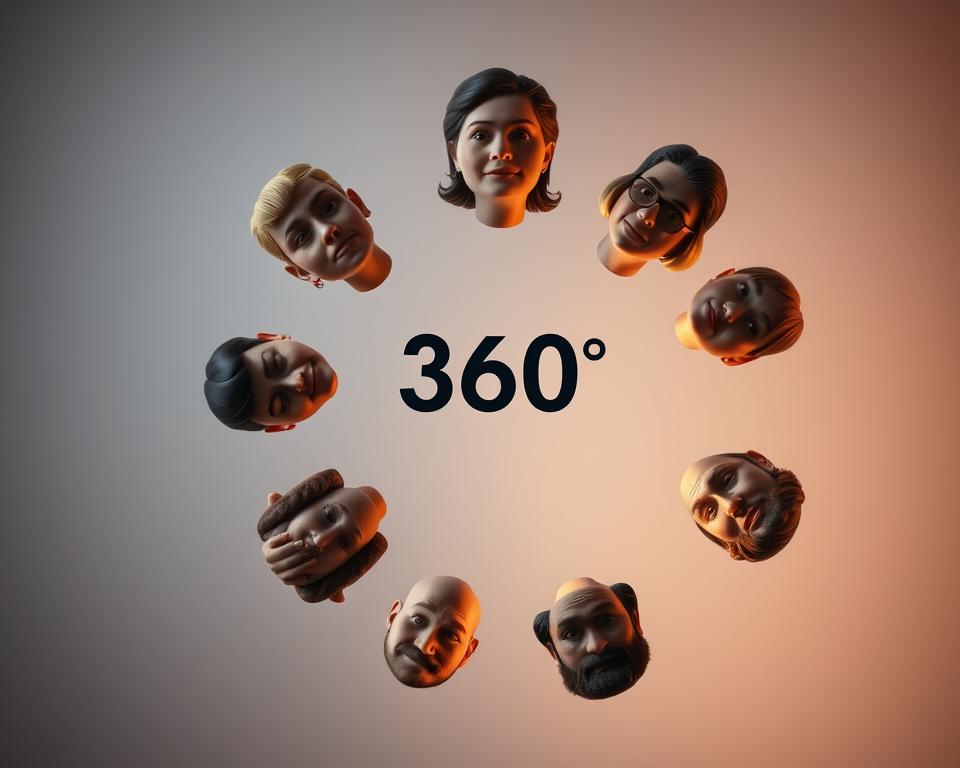Оголошення
performance strategies can change how your organization links goals, feedback, analytics, and development.
Do you ever wonder why so many review systems leave співробітники uninspired and managers frustrated? Gallup and SHRM data summarized by AIHR show under 20% of employees find reviews inspiring, and 95% of managers are dissatisfied. Those gaps explain why firms like Adobe and Microsoft moved away from annual appraisals.
You’ll get a practical list that balances management methods, goal setting, 360 feedback, and coaching. We include recent adoption results from Culture Amp, Tonkin + Taylor, and Bombas to show real shifts in participation and perceived fairness.
Try small pilots, measure what matters, and adapt — this is guidance, not a promise. The ideas that follow give clear actions and measures so you can test what fits your team and business constraints.
Introduction: Why performance strategies matter right now
performance strategies must adapt to 2025 realities like hybrid work, economic uncertainty, and a need for faster cycles of planning and learning.
Оголошення
Today in the U.S., many review systems fail to inspire: under 20% of employees find reviews motivating, and 95% of managers report dissatisfaction with current review models. Yet when management works well, 60% of companies say they outperform peers. That gap shows why change matters.
The seven ideas ahead knit together continuous goal-setting, ongoing feedback, people analytics, and targeted development into a single, repeatable cycle. You’ll see SMART and OKRs for clarity, structured 1-on-1s to solve blockers quickly, 360 feedback and calibration for fairness, and recognition that boosts morale.
What to expect
This guidance is informational, not a guarantee. Use pilots, measure adoption and goal completion, and adapt to your culture and capacity. We’ll keep language simple, offer concrete examples you can run next quarter, and show lightweight steps that respect managers’ time and tool limits.
Оголошення
Ground rules for effective performance management in 2025
Set a few shared norms so managers and employees know what to expect and how to act between reviews. These ground rules help you move from rigid yearly cycles to a continuous, mixed-method approach that fits modern teams.
Move from annual reviews to continuous, mixed methods
Shift cadence: blend quick check-ins, short written reflections, and periodic summaries instead of a single annual meeting. Companies like Adobe and Deloitte show how this reduces surprises and lifts fairness.
Align the four stages
Map planning, monitoring, developing/reviewing, and rating/rewarding so each stage feeds the next. Use one simple artifact per stage — quarterly goals, monthly 1‑on‑1 notes, a mid-cycle development check, and a calibrated annual summary — to cut admin work.
Set expectations: clarity, fairness, and data-informed decisions
Define success: role-level competencies, measurable objectives, and observable behaviors so every employee can see what counts.
“Fairness and consistency increase trust and make ratings feel legitimate.”
- Run short calibration sessions to reduce bias.
- Track a few leading indicators (1‑on‑1 adoption, timeliness of feedback) and lagging indicators (goal completion).
- Start with templates and routines — you don’t need a big platform to begin.
These rules are guidance: tailor them to your organization’s size, culture, and regulatory needs while keeping data and fairness at the center.
Set clear, aligned goals with SMART, OKRs, and role-based metrics
When goals are crisp and visible, teams waste less time and deliver more value.
SMART goals help each employee know exactly what success looks like. Use Specific, Measurable, Achievable, Relevant, and Time-bound items for individual clarity.
OKRs link those individual efforts to company objectives. Objectives state intent; Key Results make success measurable. OKRs keep your organization and teams pulling the same way.
How to cascade priorities to teams and roles
Translate company priorities into 3–5 team KPIs, then map 1–3 role-level outcomes that show how each person contributes. Co-create goals with managers and employees to increase ownership.
- Limit goals to focus impact over volume.
- Include qualitative milestones like stakeholder approvals alongside metrics.
- Track completion rates on a simple dashboard or shared sheet.
Real example and clear takeaway
Bombas moved goals out of static docs into a shared system. Visibility rose, accountability improved, and they reached 100% completion in evaluation cycles after adding continuous feedback and 360 inputs.
Їжа на винос: Track goal completion quarterly, refresh objectives as priorities shift, and use regular 1-on-1 feedback to remove blockers early.
Embrace continuous feedback and quality 1-on-1s
Small, reliable 1-on-1s create momentum and clarity for both managers and employees. Move away from once-a-year reviews and build a rhythm of short check-ins. This helps you resolve blockers faster and keep goals current.
Shift cadence: aim for weekly or biweekly meetings with a shared agenda that focuses on progress, roadblocks, shifting priorities, and specific support requests.
Structure conversations
Use a simple agenda so each meeting is predictable and useful. Keep notes in a shared document to track action items and owners.
- Progress: quick wins and status on goals.
- Roadblocks: ask open questions to surface risks early.
- Priorities & support: co-create next steps and owner names.
- Follow-up: brief check-ins between meetings to confirm movement.
Coach for timely, specific, two-way feedback
Encourage managers to give behavior-based comments and invite employee reflections. Occasional skip-level or cross-functional input broadens perspective.
Tonkin + Taylor reached 88% participation, saw 60% use continuous tools, and raised perceived fairness by 8 points after adding quality check-ins and calibration.
Result: regular, structured conversations reduce surprises in formal reviews, boost engagement, and speed up development.
Use 360-degree feedback and fair reviews to reduce bias
Combining views from managers, peers, and stakeholders can reveal strengths that single-source reviews miss. A balanced 360 that includes manager assessment, self-reflection, peer input, and stakeholder notes gives a fuller view of an employee’s work and impact.

Blend inputs for a fuller view
Start with a clear set of competencies for each role. Define observable behaviors so raters comment on actions, not impressions.
Include self-evaluations to surface unseen achievements and ownership of development areas. Limit peer raters to a small, relevant group to reduce noise.
Calibrate to build fairness and trust
Hold short calibration meetings where managers compare evidence and discuss rating differences. Tonkin + Taylor raised perceived fairness by eight points after adding this step.
Use calibration to spot rating drift and align expectations before decisions touch pay or promotion.
Practical tip: define behaviors first
Write 3–5 behavior examples per competency so feedback is specific and actionable. Train participants on giving constructive comments and on confidentiality.
- Separate development-focused input from compensation when possible to improve candor.
- Use structured prompts and observable examples to reduce bias.
- Review the process regularly and adjust guardrails as needed.
Real-world note: Bombas adopted 360 inputs to create fairer reviews and connect evaluations more transparently to decisions. Culture Amp data also shows that adding self and peer feedback helps when less than half of employees feel managers assess work effectively.
Invest in development: personalized plans, coaching, and learning culture
Build learning pathways that connect current goals to the skills your people need next. A focused plan prevents generic training and keeps growth tied to real work.
Create personalized development plans that map role-based gaps to short, quarterly milestones. Link each milestone to a goal, a course or shadowing session, and an applied project so progress is visible.
Create personalized development plans linked to goals and skills gaps
Have employees and managers co-create plans that list 3–5 skills, resources, and a timeline. Capture these activities where goals and feedback live for single-source visibility.
Mentorship and coaching to reinforce performance and engagement
Pair formal learning with mentors or coaches who support learning in the flow of work. Mentorship builds accountability and helps transfer new skills into everyday decisions.
Measure progress with milestones, not just outcomes
- Define milestones: course completion, shadow sessions, applied projects, and observed behaviors.
- Run a quarterly development check-in separate from ratings to keep growth safe and focused.
- Budget equitably for learning so all employees see clear opportunities for growth and succession.
Leverage technology and analytics to guide decisions
Технології can centralize goals, feedback, and reviews so your team spends less time on admin and more time on work that matters.
Adopt platforms for goal tracking and feedback
Choose tools that keep goals, 1‑on‑1 notes, and review evidence in one place. This reduces duplication and improves visibility for employees and managers.
Track a compact set of people analytics
- Goal completion rates
- Engagement and adoption of 1‑on‑1s and feedback
- Calibration outcomes and outliers
Turn insights into action
Build simple dashboards to spot trends, low-adoption pockets, and equity gaps. Run small experiments — for example, add a mid-quarter goals refresh when you see slippage.
Почніть з малого: spreadsheets and short surveys work before you scale to full tools. Also, be transparent with employees about what data you collect and how you use it. Regular audits and quarterly review cycles help you iterate responsibly and keep your management approach aligned with real needs.
Recognize achievements and reinforce desired behaviors
A clear recognition approach helps teams see which actions drive success. When you tie praise to skills and milestones, you make it concrete and repeatable. That builds a culture where people know what counts.
Blend public and private rewards to fit preferences
Mix shoutouts and quiet thanks: some employees thrive with public praise, others prefer a private note. Use both so recognition stays meaningful.
- Offer monetary options—bonuses, spot awards, or equity for high-impact wins.
- Provide non-monetary perks—extra PTO, special projects, or learning credits.
- Encourage peer-to-peer recognition to widen visibility across the team.
Celebrate milestones and tie rewards to competencies
Link awards to specific behaviors and milestones. When you point to the skill or action that earned praise, employees learn what to repeat.
- Celebrate project completions, quarterly goal wins, and tenure milestones.
- Coach managers to give quick, specific recognition to boost motivation and retention.
- Track who is recognized to keep equity in check and spotlight quieter contributors.
Порада: integrate recognition into 1-on-1s, all-hands, and rituals so appreciation becomes routine and supports development across your organization.
Seven performance strategies that really work
Here are seven concise actions you can test this quarter to improve goal clarity and employee growth.
Align goals with SMART and OKRs
Set clear, measurable goals at the role and company level. Use SMART for individual clarity and OKRs to link team work to objectives. Refresh quarterly so goals stay relevant.
Schedule regular 1-on-1s
Run short, agenda-led check‑ins that cover progress, blockers, priorities, and support. Keep notes visible to maintain momentum between meetings.
Use 360 feedback and calibration
Collect manager, peer, and self inputs and hold short calibration sessions. Training raters on behavior-based comments helps reduce bias and raise fairness.
Build personalized development and mentorship
Create short growth plans with milestones, mentors, and applied projects. Link each milestone to a goal so development ties directly to on-the-job success.
Adopt software and dashboards
Pick lightweight tools to track goals, feedback, and cycle completion. Dashboards reveal adoption gaps without adding admin work.
Apply people analytics
Monitor goal completion, 1-on-1 adoption, and calibration trends to spot gaps. Use data to guide simple experiments and measure impact.
Design timely recognition tied to impact
Celebrate specific achievements linked to competencies. Timely, clear rewards teach teams what to repeat and build trust across the organization.
Почніть з малого: pilot one or two moves, measure adoption, and iterate. Communicate the “why” to your people and adapt the plan to your company culture and rules.
“Pilots from Tonkin + Taylor and Bombas show that focused check-ins, 360 inputs, and clear goals raise participation and perceived fairness.”
Висновок
Close with a simple path to experiment, measure, and refine your management approach.
Start with a small pilot in one team and track adoption, goal completion, and perceived fairness. Run a quarterly retrospective that blends analytics, manager input, and direct comments from employees to guide changes.
Be transparent about expectations, timelines, and support. Upskill managers on coaching, 360 feedback, and calibration so reviews and development feel fair and useful.
Focus on a few key metrics, recognize milestones and learning, and respect culture and legal norms when you adapt. No framework is universal — your results depend on context and execution.
Test small, learn fast, and iterate — that way your performance strategies stay aligned with business needs and help your organization grow with trust and clarity.



